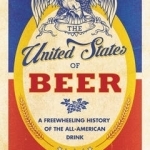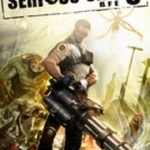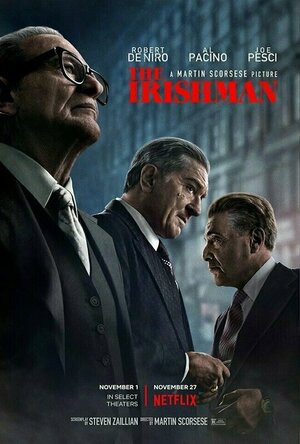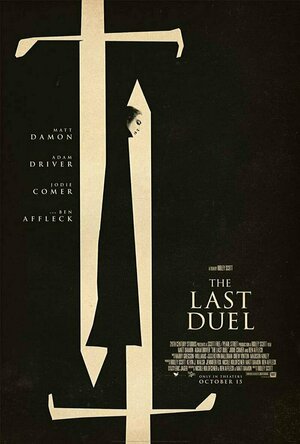
Writing on the Road: Campervan Love and the Joy of Solitude
Book
This book is not just funny (or sad) stories of campervan trips in Scotland; it is not just 'Zen and...

Pearl's Peril
Games
App
PLAY THE PERFECT HIDDEN OBJECT GAME TODAY Rediscover love, mystery, romance and grand adventure...
Kirk Bage (1775 KP) rated The Irishman (2019) in Movies
Mar 3, 2020
Also in the negative column is the ageing and de-ageing technology, which whilst pretty damn good is noticable and sometimes distracting. Myself, I was willing to forgive these faults, just for the privilege of being swept away once more by Scorsese’s eye for a shot and moments of pure mood, of which there are too many to count.
De Niro hasn’t been this good for years, that seems to be accepted knowledge. Pacino is Pacino, what else would you want him to be? But, it is the return from retirement of Joe Pesci that really impressed me. Almost certainly a career best performance at the age of 77 – always underplayed and menacing, there were times he acted the big two under the table. Of the 10 nominations at the 92nd Oscars, this is the one I hope lands.
If Scorsese also wins for best director, I wouldn’t complain either. Looking at his body of work, I count this as the 20th film I would class as very good or better. And although less “fun” it is certainly a better, classier film than The Departed, his only win to date. Other gongs I would give serious weight to are Thelma Schoonmaker for editing, and production design, which is as rich and detailed as it could possibly be, at times breath-takingly so.
There has been much made of the idea that this is Scorsese atoning for his sins in using violence as entertainment. And it is true that this film seems to meditate more or regret and loneliness as a side effect of a violent life. There is blood, people die violently, but these moments are often brief and unshowey, keeping the focus on the men (and it is always the men) who choose to live this way. In the end, we all age and grow weak; time advances and we are left with nothing but memories, surrounded by people who can’t remember who we are and what we did in our Golden days.
I found the last half hour very moving and somewhat depressing. I think we are meant to. No big climax, just a fading away. It felt like the hours after a party, full of joy and noise, when you are finally left alone with only yourself for company. More than any other emotion, this is what I have taken from this experience; and it’s a good trick, fully intended, that I applaud. And it is what ultimately makes the film feel mature and meaningful.
However, for all the praise it deserves, this isn’t a film I will choose to watch again in a hurry. And I think that will be common. It lacks the tension of a tighter, shorter film, and emotionally it is often difficult to connect to these men and their brutal deeds. If that is the point, then I get it… but there are plenty of films to go to, as already mentioned that have a more satisfying and rounded feel. Recommended highly, but with reservations.

The Essential Marilyn Monroe: Milton H. Greene: 50 Sessions
Book
Milton H. Greene (1922-1985), famous for his fashion photography and celebrity portraits from the...

The United States of Beer: A Regional History of the All-American Drink
Book
From the author of "the definitive history of bourbon" (Sacramento Bee) comes the epic true tale of...

Serious Sam 3: BFE
Video Game
Serious Sam 3: BFE is a glorious throwback to the golden age of first-person shooters where men were...

I Like to Watch: Arguing My Way Through the TV Revolution
Book
From The New Yorker's fiercely original, Pulitzer Prize-winning culture critic, a provocative...

Strawberry Shortcake Holiday Hair - Fashion World
Entertainment and Games
App
Cut, style and create amazing hairdos around the world with Strawberry Shortcake™! Budge...
BankofMarquis (1832 KP) rated The Last Duel (2021) in Movies
Oct 30, 2021
However, he’ll have to do better than THE LAST DUEL to keep the genre going.
Starring Matt Damon, Ben Affleck, Adam Driver and Jodi Comer, THE LAST DUEL tells the tale of the…well…Last Duel in France in the 1300’s. The story tells the tale of 2 noblemen, their ups & downs and the accusation of the wife of one of them that the other raped her. The only way to solve the dispute is a duel to the death.
Following the format of such films as RASHOMON (1950) and, more recently, WRATH OF MAN (2021), THE LAST DUEL is told in 4 parts - telling the same story from different perspectives. But, unlike RASHOMON and (surprisingly) WRATH OF MAN which peeled the onion back during each different telling, adding a deeper and richer layer to the story each time, THE LAST DUEL pretty much tells the same story over and over, not really telling it differently and not really adding any layers to the story. You pretty much know before THE LAST DUEL who is innocent, who is guilty and how the duel is going to play out.
So, Director Scott will need to rely on the performances and the look and feel of the film to get the audience hooked and intrigued during this 2 hour and 32 minute epic, but the script (by Nicole Holofcener, Affleck & Damon just isn’t up to the task.
The acting is…fine. Driver fares the best out of the 4 leads - probably because he is the actor most suited for this type of film than the others. Comer’s part is underwritten and she has surprisingly little to do - which brings us to Affleck and Damon. Affleck has the showier role and provides a spark of interest in his limited time on the screen while Damon is dour and serious and trudges through the film - as does the audience.
Director Scott (ALIEN) brings professionalism to the proceedings and accurately depicts the look and feel of the time and stages the duel (and battle scenes) with a trained eye, but the characters/performances did not leave me with anyone to truly root for (or care about) and by the time we got to THE LAST DUEL, I just wanted it to be over.
Letter Grade: B-
6 stars (out of 10) and you can take that to the Bank(ofMarquis)

Bean Dreams
Games and Entertainment
App
Get ready for the mobile platformer that literally plays like a dream. Bean Dreams is an...

